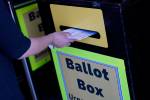No ‘nearest point of relief’ for lateral water hazard
Q. My husband says when I take relief from a lateral water hazard I get the nearest point of relief and a club-length. I say it is two club-lengths not the nearest point of relief. Who is right? — Sandy Madson
A. You are right Sandy. There is no nearest point of relief for a lateral water hazard. The definition of “nearest point of relief” is the reference point for taking relief without penalty from interference by an immovable obstruction, an abnormal ground condition or a wrong putting green. It is the point on the course nearest to where to ball lies that: 1) is not nearer the hole, and 2) where, if the ball were so positioned, no interference by the condition from which relief is sought would exist for the stroke the player would have made from the original position if the condition were not there.
In order to determine the nearest point of relief accurately, the player should use the club with which he would have made his next stroke if the condition were not there to simulate the address position, direction of play and swing for such a stroke.
When dropping from a lateral water hazard, one of the player’s options is to drop within two club-lengths of the point where the ball last crossed the margin of the hazard. For additional options for dropping from a water hazard or lateral water hazard, see Rule 26-1.
Q. I was out at Southern Highlands last week watching the UNLV men’s golf team play in the Collegiate Masters tournament, and I saw something happen that I was curious about. On hole No. 12, which was marked as a lateral water hazard, it seemed that the players were taking a lot of time dropping from the hazard. Can you tell me what was going on? — Tom Silver
A. Since it was an extremely windy day on that Saturday, the players were having trouble getting their ball to stay at rest after dropping from the hazard. They would drop twice and then try and place the ball where it struck the ground on the second drop. Sometimes the ball would not stay on this spot so they had to place the ball at the nearest spot where it can be placed at rest that is not nearer the hole and not in a hazard.
Q. Can you give me a key to help our ladies remember what to do when the wind moves the ball and it has not been addressed? — Sara Minelle
A. Sara, ask them what they would do if the wind moved the ball and no one saw it happen? They would probably say, “Play the ball where it lies. What else?” That would be the correct answer. If you have not addressed your ball or done anything to cause it to move and it moves, play it where it lies. Do not put it back.
Sue May is a U.S. Open rules official, a member of the USGA Senior Women’s committee and head rules director for the Butch Harmon Vegas Tour. Address your rules questions to suemay@cox.net.


















